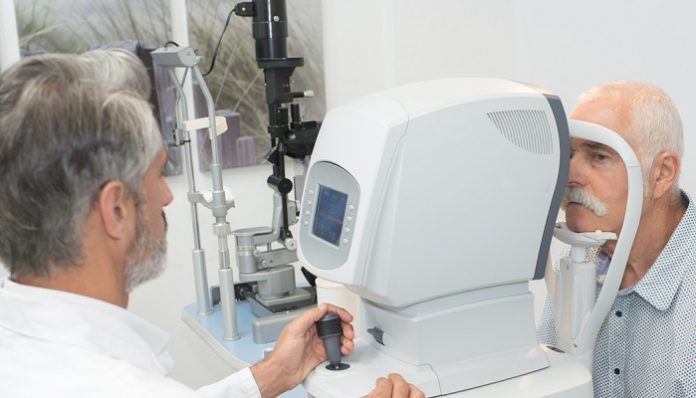Ophthalmology is a specialized field of medicine that requires precision and accuracy when diagnosing and treating eye conditions. The right equipment is essential for providing accurate diagnosis and effective treatment. In this article, we will explore the world of ophthalmology equipment, including the different types of equipment and the benefits of leasing vs. buying.
Types of Ophthalmology Equipment
There are many different types of ophthalmology equipment available, each with its unique features and benefits. Let’s learn more about some of the most common types of ophthalmology equipment:
1. Slit Lamps
A slit lamp is a microscope that allows doctors to examine the structures of the eye in detail. It uses a high-intensity light source and a binocular microscope to provide magnified views of the eye’s anterior segment, including the cornea, iris, and lens.
2. Fundus Cameras
A fundus camera is a specialized camera that captures images of the back of the eye, including the retina and optic nerve. These images can be used to diagnose and monitor conditions such as glaucoma, macular degeneration, and diabetic retinopathy.
3. Optical Coherence Tomography (OCT) Machines
OCT machines use light waves to capture detailed cross-sectional images of the retina, allowing doctors to diagnose and monitor conditions such as macular degeneration, glaucoma, and diabetic retinopathy.
4. Refractometers
A refractometer is a device that measures a person’s refractive error, or the degree of nearsightedness, farsightedness, or astigmatism. This information is used to prescribe corrective lenses or to determine if a patient is a good candidate for refractive surgery.
5. Phoropters
A phoropter is an instrument used to measure a person’s refractive error and determine the appropriate lens prescription for glasses or contact lenses. It is often used during an eye exam to determine the best corrective lens prescription for a patient.
Benefits of Leasing Ophthalmology Equipment
Leasing ophthalmology equipment can provide many benefits for medical practices, including:
1. Cost Savings
Leasing equipment can provide significant cost savings over purchasing equipment outright. Leasing allows practices to avoid large upfront costs and instead pay for equipment over time, spreading the cost out over several years.
2. Upgraded Technology
Leasing allows practices to upgrade their equipment more frequently, ensuring that they have access to the latest technology. Leasing companies often offer the option to upgrade equipment at the end of the lease term, allowing practices to keep up with advancements in technology without having to purchase new equipment outright.
3. Tax Benefits
Leasing ophthalmology equipment can provide tax benefits for practices. Leasing payments are typically tax-deductible, providing a valuable deduction for the practice’s tax return.
4. Flexibility
Leasing provides flexibility for practices, allowing them to adjust their equipment as their needs change. Leasing terms can be customized to suit the practice’s specific needs, including the length of the lease term and the option to purchase the equipment at the end of the lease term.
5. Maintenance and Repair Services
Leasing companies often offer maintenance and repair services as part of the lease agreement, providing peace of mind for practices. These services can help ensure that equipment is properly maintained and functioning correctly, reducing the risk of downtime and lost revenue.
Buying vs. Leasing Ophthalmology Equipment
When deciding between buying and leasing ophthalmology equipment, practices should consider their specific needs and circumstances. Here are some factors to consider when deciding whether to buy or lease ophthalmology equipment:
1. Upfront Costs
Buying ophthalmology equipment requires a significant upfront investment, while leasing allows practicesto spread the cost out over time, making it a more affordable option.
2. Technology
Technology is advancing rapidly in the ophthalmology field, and new equipment is constantly being developed. Leasing allows practices to stay up to date with the latest technology, while buying may result in equipment becoming outdated before the practice can recoup its investment.
3. Maintenance and Repairs
Buying ophthalmology equipment requires practices to take on the responsibility of maintaining and repairing the equipment. Leasing equipment often includes maintenance and repair services, which can save practices time and money.
4. Tax Benefits
Leasing ophthalmology equipment provides tax benefits that are not available when buying equipment outright. Lease payments are tax-deductible, providing a valuable deduction for the practice’s tax return.
5. Cash Flow
Leasing ophthalmology equipment can help practices manage their cash flow by spreading the cost of equipment out over time. Buying equipment requires a significant upfront investment, which can strain a practice’s cash flow.
When choosing to lease ophthalmology equipment, it is important to consider the terms of the lease agreement carefully. Practices should ensure that the lease agreement includes all necessary equipment, maintenance and repair services, and a clear understanding of the lease term and payment schedule. Additionally, practices should consider the reputation and experience of the leasing company, ensuring that they have a proven track record of providing quality equipment and service. By carefully reviewing the lease agreement and choosing a reputable leasing company, practices can enjoy the benefits of leasing ophthalmology equipment with confidence.
Yes, ophthalmology equipment plays a critical role in the diagnosis and treatment of eye conditions. There are many different types of ophthalmology equipment available, each with its unique features and benefits. When deciding whether to buy or lease ophthalmology equipment, practices should consider their specific needs and circumstances. Leasing ophthalmology equipment can provide many benefits, including cost savings, access to the latest technology, tax benefits, flexibility, and maintenance and repair services. By carefully considering the pros and cons of buying vs. leasing, practices can make an informed decision and ensure that they have the equipment they need to provide the best possible care to their patients.























